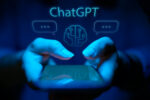Key points:
- Don’t fight AI–learn to embrace it for teaching and learning
- Using AI will help quell fears about how it could harm education
- See related article: Navigating generative AI: Promoting academic integrity
- For more news on AI in education, see eSN’s Digital Learning page
You’ve heard all the news about kids using ChatGPT to cheat, but there’s another side to this story. Just as the internet revolutionized education, AI will be the next game-changer. While the fears of cheating have definitely been legitimate, have you actually tried writing an essay using just AI? Hate to say it, but the outcomes aren’t instant gratification.
Create your Free Account to Continue Reading
eSchool News is Free for qualified educators. Sign up or login
to access all our K-12 news and resources.
Please confirm your email address
More News from eSchool News
Want to share a great resource? Let us know at submissions@eschoolmedia.com.
Source: https://www.eschoolnews.com/digital-learning/2023/10/25/5-positive-ways-students-can-use-ai/












